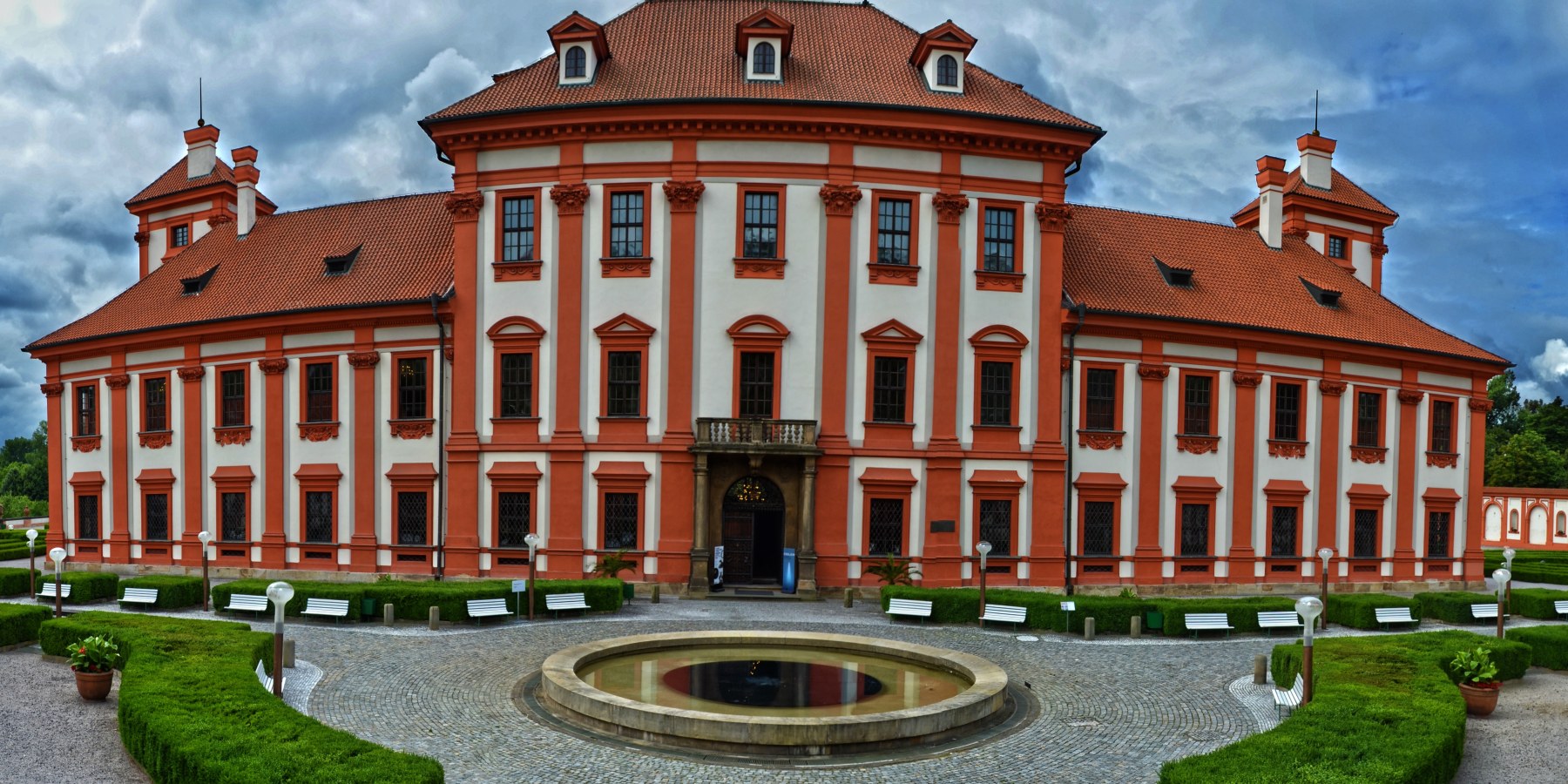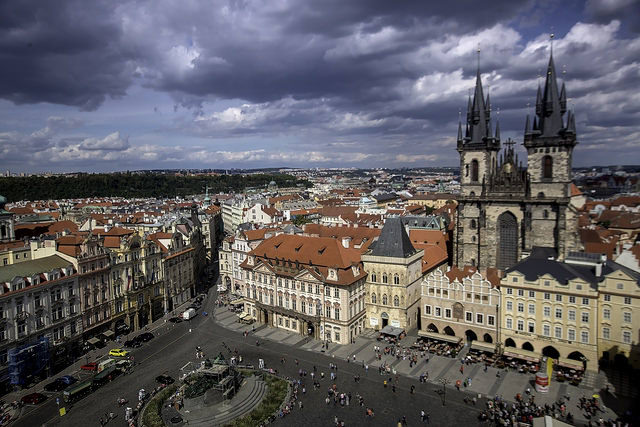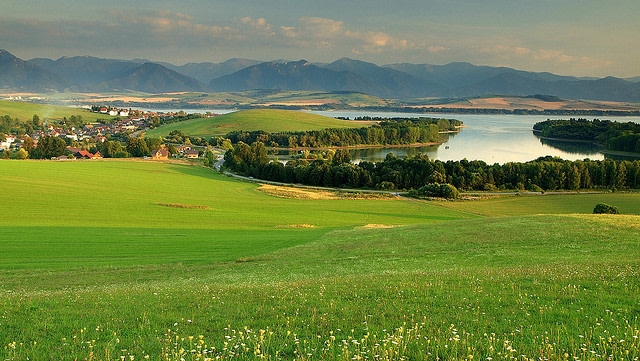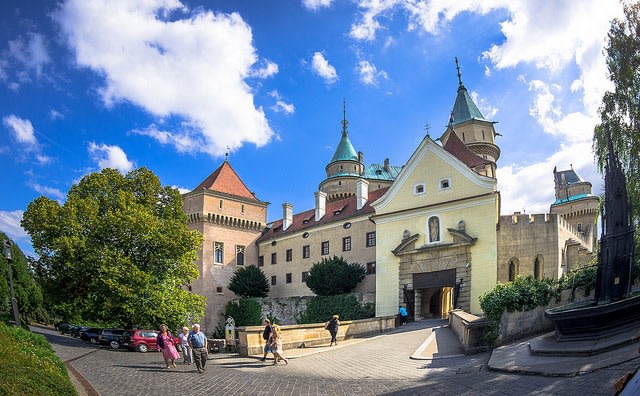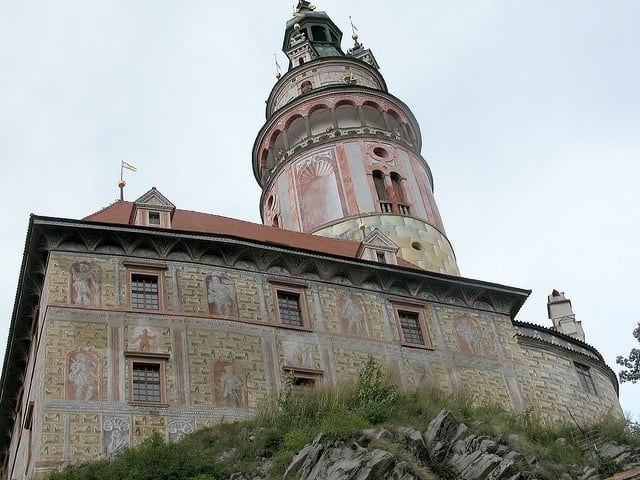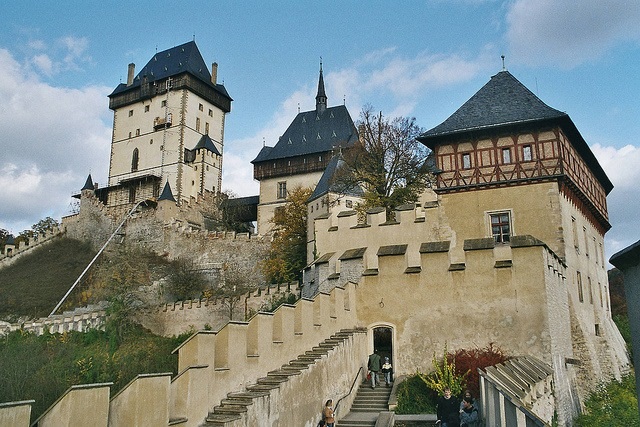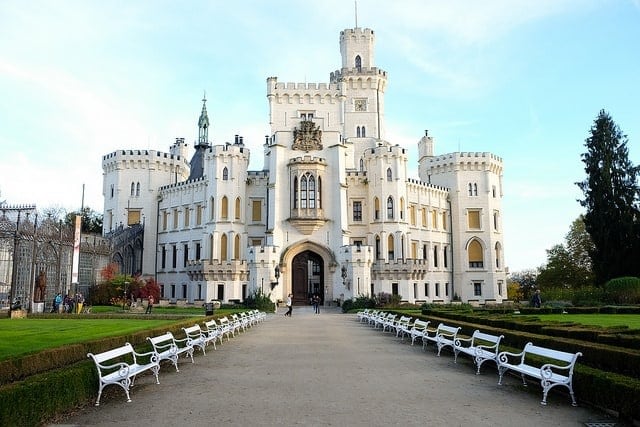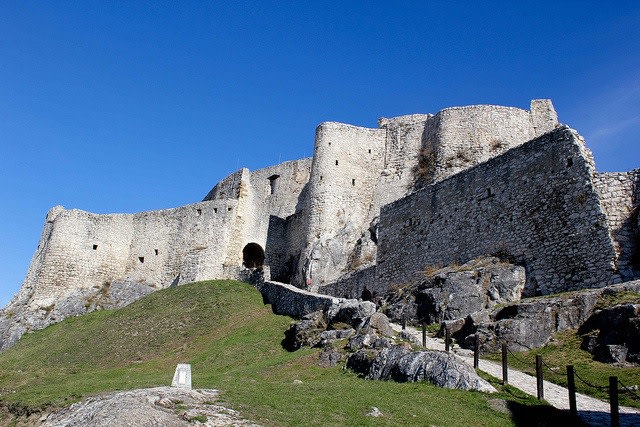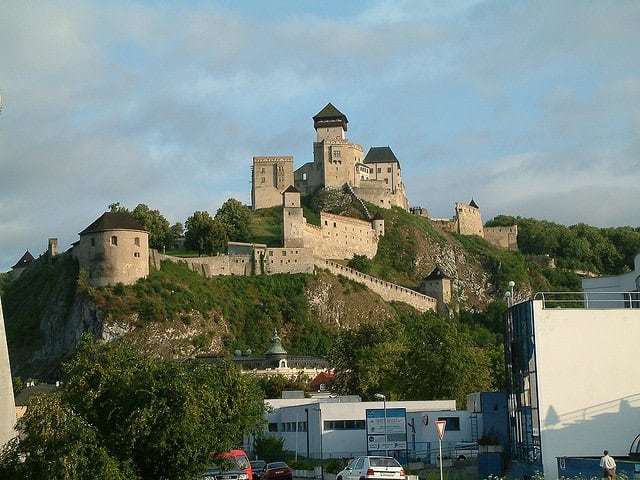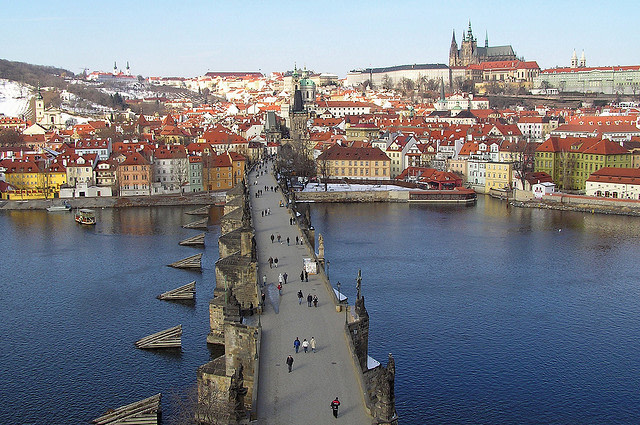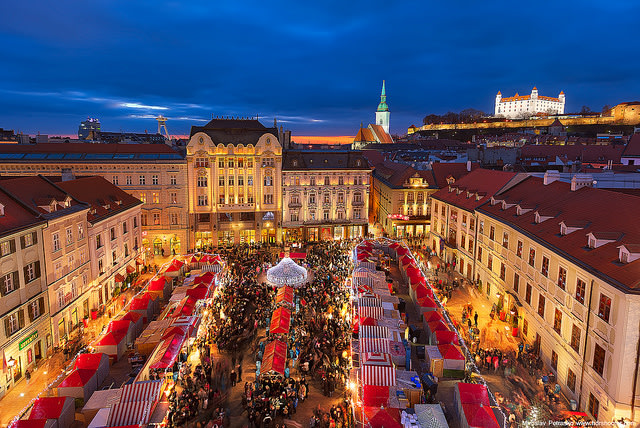| 8 mins read
By Jennifer Mullen
Majestic castles, towering forts, timeless villages and rolling landscapes worthy of an art canvass – these are places where the past comes to life in the Czech and Slovak Republics. For many years in the decades following the First World War they were one nation, Czechoslovakia. Following the fall of the Iron Curtain in 1989 and the subsequent changes sweeping Europe, these countries experienced an amicable “Velvet Divorce” in 1993. Although different countries in name, language and identity, these neighbours share a great deal of history and cultural similarities; therefore a knowledgeable Czech or Slovak tour guide will be able to guide you through an itinerary, rich in folktales, magnificent chateaux and the people who have made these countries what they are today.
The best journeys often leave long lasting memories which appeal to all senses, whether it be marvelling at dramatic new sights, or tasting new delicacies. In the case of the Czech Republic, the best known music composition of Czech composer Smetana “Vltava” (sometimes also known as the German “die Moldau”) will immediately evoke powerful images of the Vltava River, first as a bubbling spring, then travelling through woods and meadows, past a farmer’s wedding and finally flowing towards Prague.
If water is one’s preferred means of travel, it is also possible to travel from Vienna to the Slovak capital, Bratislava, along the River Danube on a High Speed boat, which takes just under one and a half hours. This River crosses through ten countries, so is officially the most international river in the world.
Fairytales, Folklore and Festivals
Before coming to this part of Europe, it is worth grabbing a book on traditional Czech and Slovak fairy tales, whose significance in local culture should not be underestimated. Lose yourself in the tales of kings, princes or mythical creatures, such as the legendary water sprite called “Vodnik” or “Hastrman”, who rides a catfish and gathers souls in a jar! Another supernatural spirit is the White Lady, who is said to inhabit castles, such as Rožmberk, which is thought to be one of the oldest castles in South Bohemia.
If you enjoy a good, haunting tale, it is well worth visiting Bojnice Castle, which of the most romantic and most visited castles in Slovakia. In May every year there is a popular Festival of Ghosts and Spirits, which attracts many international visitors. Likewise a popular festival in the Czech Republic which stems from centuries gone by is the “Burning of the Witches” on 30th April, which nowadays is more of a competition between small villages who can build the biggest fire or drink the most beer.
To compensate for all this darkness, May 1st is the Day of Love. Here you will see couples gather in Prague’s Petrin Park, at the statue of Karel Hynek Mácha, the Czech Romantic "poet of love and romance”. It is customary to kiss your beloved under a blooming cherry tree, and some villages will also put up maypoles.
Castles galore
It is almost impossible to say which are the best castles to visit, but a good Czech or Slovakian tour guide will help you narrow down your short list (as the Slovak Republic alone has over 300 castles, albeit largely in ruins). This will not only give you a far deeper understanding of the regions’ history of conquerors, religious struggles and heroic figures during perilous times, but will also offer practical advice on opening hours, accessibility etc. Some of the more noteworthy castles include:
Český Krumlov: (Czech) The jewel in the Czech Republic’s crown, Český Krumlov is UNESCO listed as being the best preserved medieval town in the whole of Central Europe, with its twisted maze of cobblestone alleys and streets surrounding the castle. The views from the castle are spectacular and the town has an excellent selection of restaurants and bars.
Karlštejn Castle: (Czech) Established by the Czech King Charles IV as a repository of royal treasures, crown jewels, as well as holy relics, this castle sits on a hillside, towering above the charming town below, with their cobbles and red roofs.
Hluboká Castle: (Czech) This striking white chateau rather looks like icing on a cake, with its tall towers and almost toy-like architecture. Set slightly off the mainstream tourist path, one can spend hours admiring the intricate stone and woodwork, as well as meandering through the manicured gardens.
Spis Castle: (Slovak) This imposing and ghostly 12th century fortress is the biggest castle in Slovakia, if not one of the biggest castle complexes in Europe. Set on an isolated hill 200 m above the surrounding land, one can almost imagine that the sprawling walls of this historic giant could whisper tales of brutal armies and power struggles over the centuries. For this reason the castle has been a designatedUNESCO World Heritage Site since 1993.
Trenčín Castle: (Slovak) The third-largest castle in Slovakia, Trenčín Castle belongs to the National Cultural Monuments of Slovakia. The walk up is relatively challenging, but the view over the Váh River and rolling hills is simply spectacular. Don’t miss the inscriptions on the cliffs dating back from the Roman period.
Capital Cities – peaceful neighbours
No visit to a country would be complete without seeing the capital city. Prague, capital of the Czech Republic, is known as the “City of a Hundred spires”. Established over ten centuries ago as a seat for Bohemian Kings, Prague is one of the most popular tourist destinations in Europe, and a UNESCO world heritage site.
To appreciate the full panorama of the city, visit the Petrin Hill on the Western side of the city, which has an interesting observation tower, built to resemble the Eiffel Tower. Prague has very distinct seasons; in spring the landscape will be rich in blossoms and in autumn as golden as Bohemian crown jewels.
From Petrin Hill, walk along the Hunger Wall, past Strahov Monastery to come down past a number of smaller palaces, to reach Prague Castle. Having walked through the magnificent castle, take the less well known route towards Little Quarter, through the vineyards. This feels like a less popular route and will provide a photo opportunity round every corner.
The Charles Bridge is one of Prague’s most iconic landmarks, decorated by more than 30 statues. In the warmers months it is alive with street performers and artists. The medieval Old Town of Prague, with its churches, palaces, cobbled squares and grand houses really show all the character of the city.
In summer, relax and enjoy a cold Czech beer (known as Pivo) in one of the many beer gardens, such as Letna Park or Riegrovy Sady. To accompany the drinks, choose from a selection of delicious spit roast chicken breast and pork neck, nakladny hermelin (pickled cheese) and grilled klobasa sausages.
Bratislava is Slovakia’s capital and largest city, nestled on the banks of both the Danube and Morava rivers. It receives less attention than neighbouring Prague, but the city is has a very multi-cultural feel due to the influence of various ethnic and religious groups, including Germans, Slovaks, Hungarians, and Jews, who have all called it home throughout history.
To grab the best panorama of Bratislava, head to the Slavin War Memorial, located on the top of a hill. The monument was erected to commemorate the city’s liberation by the Red Army in 1945 and it is topped by an 11metre tall statue of a victorious Soviet soldier carrying a flag.
In stark contrast to this bold Soviet style architecture, the Old Town is home to numerous castles, churches, galleries and museums. Bratislava has a quaint, old world charm and is small enough to walk around comfortably.
It is highly recommended to plan a visit around Christmas time, and get lost in the magical Christmas markets, with their twinkling lights, handmade Christmas ornaments and aromas of hot crepes and mulled wine. The Nedbalka Gallery offers some stunning paintings and contemporary sculptures by Slovakian artists, all set out on five round shaped floors.
Outside the city is Devin Castle, which is one of the biggest castles in Slovakia. Built in the 9th Century, its location at the confluence of Danube and Morava rivers meant that the castle had a strategic position when influencing trade routes.
(Jen Mullen is a seasoned traveler, having lived and worked in the UK,Germany, Switzerland, Australia and most recently Southern India. In her opinion, the best parts about traveling are meeting the locals, sampling as much new food as possible and making an effort to learn new languages)
Image Details and Licenses: https://flic.kr/p/pepdgb (Nitin Vyas, CC BY-SA 2.0), https://flic.kr/p/6QaBnD (Martin Sojka, CC BY-NC-SA 2.0), https://flic.kr/p/oYXr3m (Nitin Vyas, CC BY-SA 2.0), https://flic.kr/p/k7fdRQ (Grammaticus Bramlingto, CC BY 2.0), https://flic.kr/p/ddnNyA (Kurt Bauschardt, CC BY-SA 2.0), https://flic.kr/p/6DzwHe (Tjflex2, CC BY-NC-ND 2.0), https://flic.kr/p/atFPja (Arian Zwegers, CC BY 2.0), https://flic.kr/p/mR44N (Richard White, CC BY-NC-ND 2.0), https://flic.kr/p/oZoqZ1 (Sarah Arnoff, CC BY-NC-SA 2.0), https://flic.kr/p/gquceQ (EadaoinFlynn, CC BY-NC-ND 2.0), https://flic.kr/p/wvie1 (Marian Hubinsky, CC BY 2.0), https://flic.kr/p/aJST3 (Ian Robertson, CC BY-NC 2.0), https://flic.kr/p/csXEfW (Royston Rascals, CC BY-NC 2.0), https://flic.kr/p/gDhfsB (Jorge Láscar, CC BY 2.0), https://flic.kr/p/kD5sbR (Miroslav Petrasko, CC BY-NC-ND 2.0)

